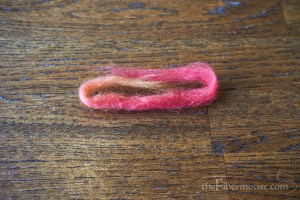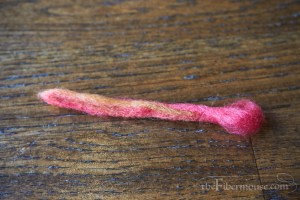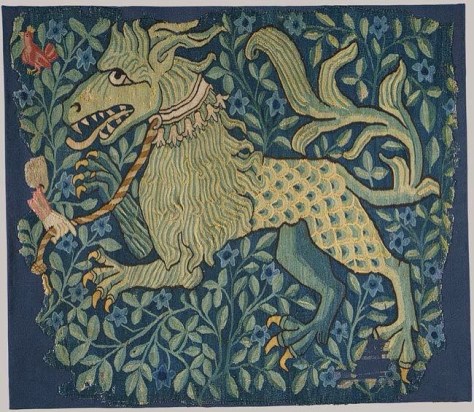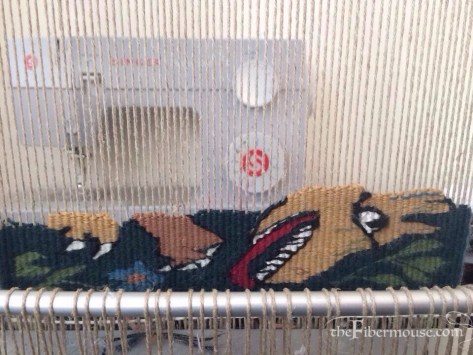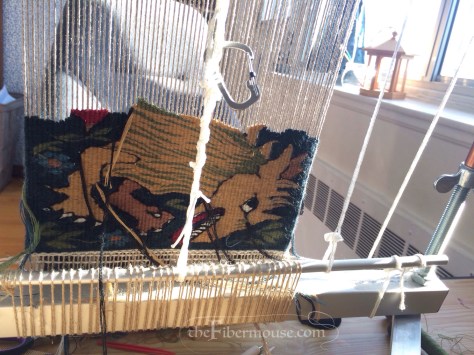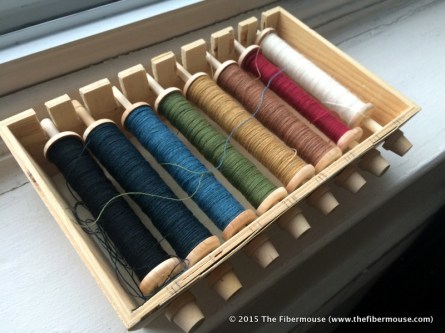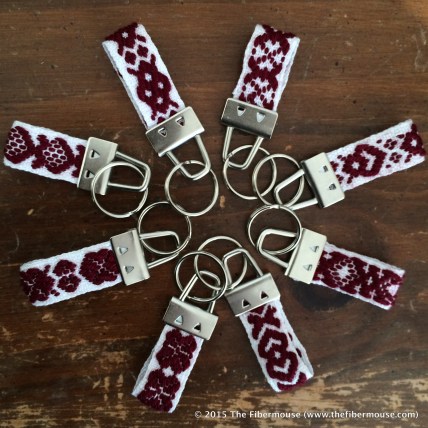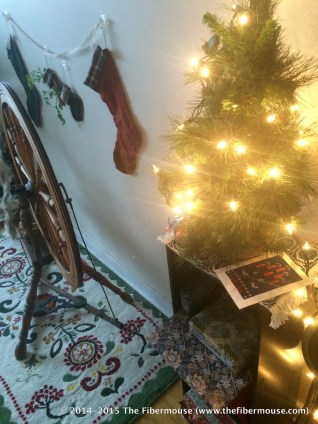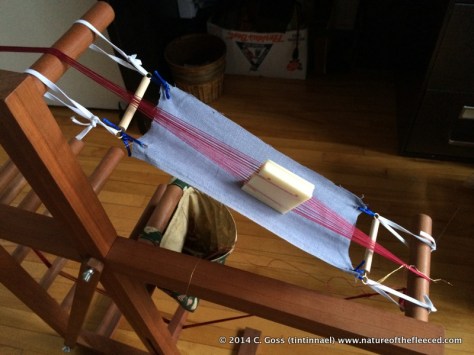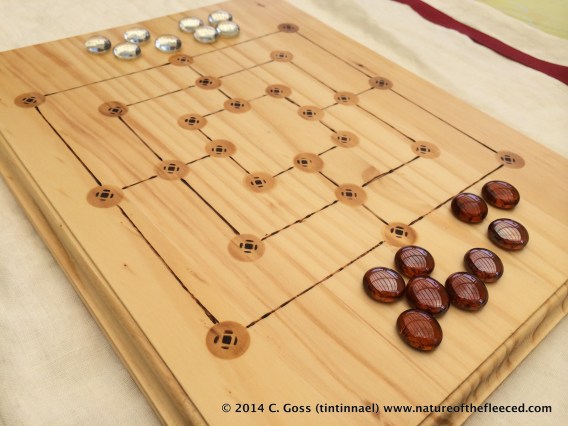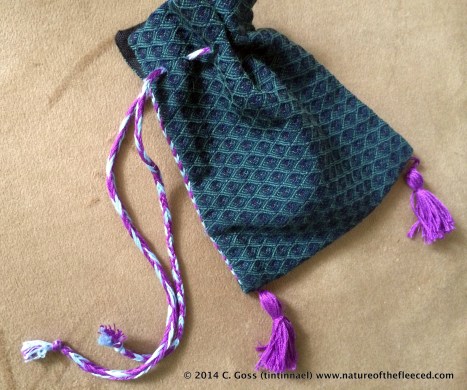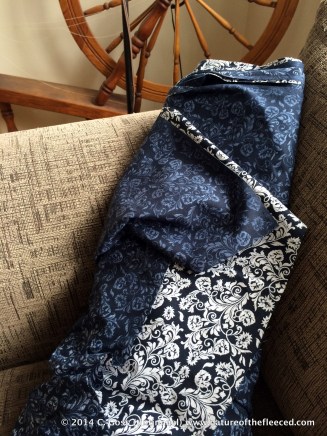A couple of years back I was asked to teach a class on thrummed mittens. Naturally, I experimented with heaps of patterns in my quest to concoct the perfect mitten– but ultimately found that the most important thing is the construction of the thrum. I thought I’d share my recipe for the perfect thrum, plus a neat trick to replace missing thrums in your finished object.
How I make my thrums
My method is based on the Yarn Harlot’s technique, but there’s one important difference: instead of twisting in step 3, I use two fingers to roll the center of the thrum against the palm of one hand until it’s lightly felted.
This creates a much more durable thrum than the twisted technique, and keeps the inside of the mitten from getting scraggly with wear. The poor half-mitten pictured below has been much abused as a teaching model, but the thrums are still as soft and puffy as when I made them. (Once washed and worn, they’ll felt and stick to one another a bit more.)
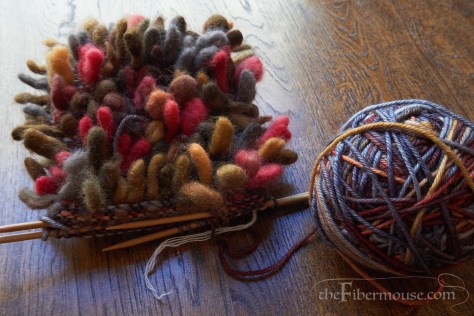
Your thrums should be a little bit thicker than the yarn you’re knitting with, but not so much that they distort the shape of the stitches. Once you knit them into the mitten, they’ll compress down to about the same size as the yarn and look like neat little hearts.

Inserting a thrum after the fact (i.e., “afterthought thrumming”)
Because the Perfect Thrum is neatly felted, you can treat it as if it were a short piece of yarn, and insert it into your knitting even after the mitten is complete. Reasons you might want to do this:
- You accidentally left out a thrum while knitting.
- You accidentally pulled out a thrum while knitting.
- One of your thrums was mangled in a tragic accident, and you yanked it out in pity.
To fill in the empty spot on your mitten, you’ll need a crochet hook in a size suitable for your yarn (or slightly bigger) and a spare thrum.

- Find the stitch where the missing thrum belongs, then insert the crochet hook under both legs of the stitch immediately above that one.
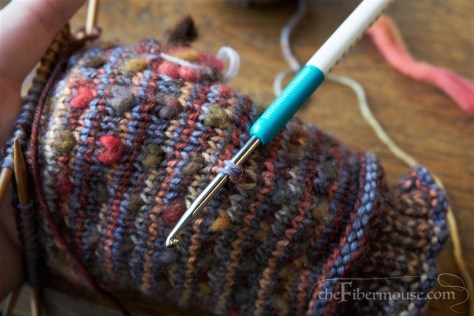
- Catch one end of the thrum and pull it through.


- Put the crochet hook inside the mitten and bring up the hook at the base of the stitch you’re thrumming.
- Catch one leg of the thrum and pull it down inside the mitten.

- Repeat with the other leg.
- Smooth the fabric around the thrum with your fingers.
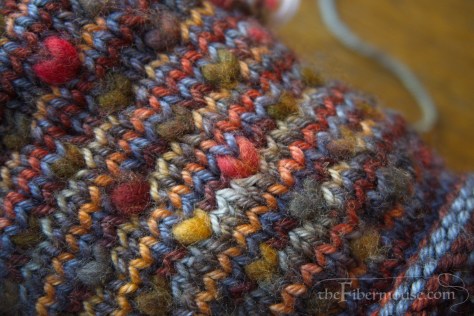 7. Admire your handiwork!
7. Admire your handiwork!
More thrumming tips
- To take your thrum knitting out on the road, prepare a batch of thrums in advance and carry them in a small organza gift bag– the fabric is stiff enough to protect your thrums from squashing, and keeps any fuzzy bits from escaping.
- Whether you’re working from a kit or following a pattern, you probably have a bit of commercially prepared top or roving with which to make your thrums. Don’t cut your fiber– just grab a pinch from one end and pull! If the fiber won’t come apart, make sure the roving isn’t twisted and move your hands farther apart. You can also strip it down lengthwise to help keep the width of your thrums consistent.
- You can insert afterthought thrums with a very short tapestry needle using duplicate stitch, but I find this rather more fiddly than the crochet hook method.



